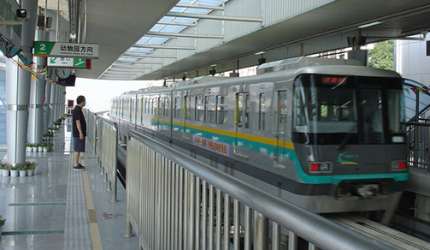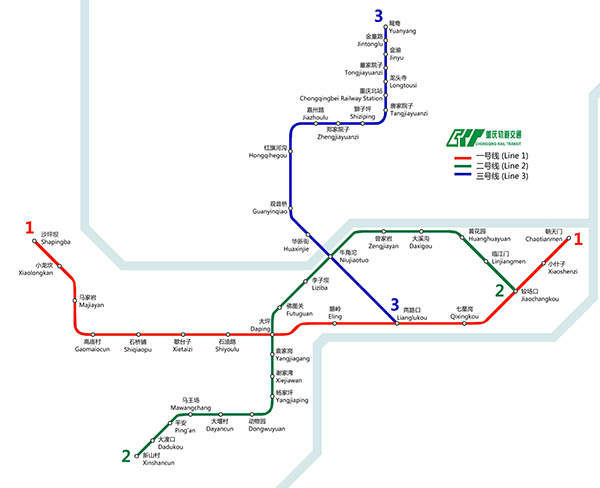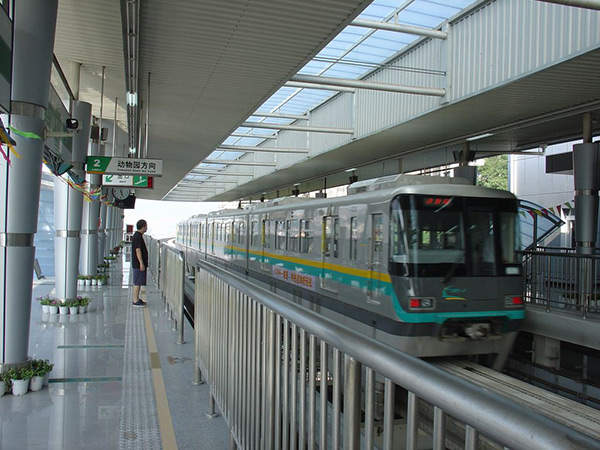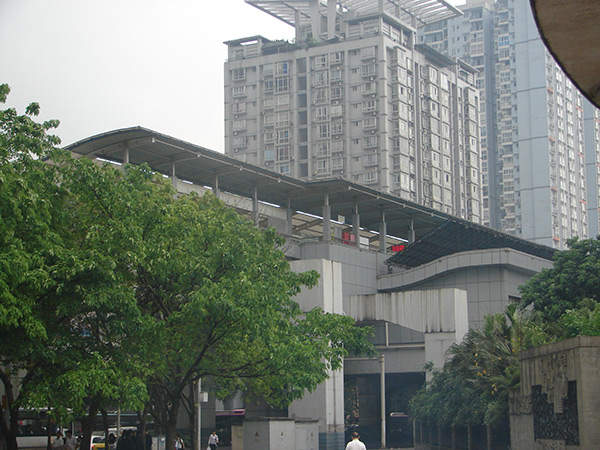
Chongqing Metro or Chongqing Rail Transit is a 75km rapid-transit system, serving the city of Chongqing in China. The metro commenced operations in 2005 and serves the needs of nearly 32 million people.
The project is part of the Chinese Government’s initiative to develop the western regions of the country. It is one of the three rapid transit systems currently operating in the region, the other two being Chengdu Metro and Xi’an Metro. Daily ridership of the metro is around 400,000 passengers.
Chongqing Metro heavy monorail technology
As well as being one of the biggest cities in China, Chongqing is also one of the fastest-growing regions. With the majority of the population depended on buses for transportation, the Chongqing provides a reliable and cheap means of transportation to match the growth of the city.
The project, which was funded by the Japan Bank for International Cooperation, is unique to China as the majority of the construction work was built over hills and rivers. The metro’s three lines use heavy monorail technology as a means for this to work.
Chongqing Metro routes
Line 1 is a 16.4km heavy rail subway stretching from Chaotianmen to Shapingba. It includes 14 stations and carries approximately 36,000 passengers every hour. Approximately half of the line is elevated, with the remaining underground.
A Hong Kong-based company was awarded the construction contract for the line in 1992 on a build, operate and transfer basis. Although construction was put on hold for several years, work resumed in June 2007, with phase one of the line put into operation in July 2011. The operating speed on this line is around 100kmph.
Phase II of the line is a 20.2km extension from Shapingba to University Town and is expected to be completed by 2013. The line will extend to 37km and include 23 stations following completion of the second phase. Phase III has also been proposed and is currently in the planning stage.
Line 2 is a 19.15km-long monorail line, which opened in 2005. It is the first line to be opened in the network and stretches from Jiaochangkou in the central district to Xinshancun. The line is mostly elevated and includes 18 stations. It uses straddle monorail technology from Hitachi. The phase II extension of the line extended it from Dongwuyuan to Xinshancun in 2006.
A 6.2km-long phase III extension of Line 2 of the line is currently under construction. The extension will stretch the line into Banan district in Chongqing. A phase IV extension is also being planned.
Line 3 stretches 39.1km from north to south across the Yangtze and Jialing rivers of China. It extends from Ertang to Jiangbei Airport and includes 29 stations. The line is of straddle-beam monorail type.
Construction of Line 3 began in April 2007 with trial operations carried out in June 2011. The Lianglukou to Yuanyang section was initially opened in September 2011, with the complete stretch open in December 2011. Total cost of construction of the line is estimated at around $2.1bn.
Planning work for a northern extension, a 10.4km underground section that will include seven stations, was completed in April 2011. The extension is scheduled for completion in 2014. A 16.5km Ertang-Yudong southern extension of the line is also being planned.
Future Chongqing Metro lines
Stretching 23.55km and connecting the districts of Nan’An, Yuzhong and Jiangbei in central Chongqing, Line 6 is currently under construction. Construction of phase one of the line, which will have 26 stations, started in 2009 and is expected to be completed by 2012. Phase II is expected to be complete by 2013.
Another eight transit lines are planned for the metro, extending the total length to 208km by 2015, increasing the daily ridership of the metro to an expected 700,000 passengers.
Chongqing Metro Contractors
Robbins Company won the contract for construction of tunnels on Line 6. The company used two large high-tech tunnel boring machines to drill two 12km-long tunnels on the line.
Infinova was awarded a contract to supply fixed and domed cameras to cover Line 1 of the metro, while General Electric Company, Chongqing Machinery and Electronic Holding signed an agreement in July 2011 to establish a joint venture to supply electronic equipment for the metro.
Siemens supplied automatic train control system for Line 1 and it is also supplying an advanced signalling and control system for Line 6.
Hunter Douglas was awarded a contract to provide ceiling and cladding for stations part of Line 1 and 3 of the metro. Thales won a contract to supply supervision and a control system for Line 1 in 2010, while NICE Systems was contracted to supply digital video security systems for Line 3.
Related project
Siemens Velaro High Speed Trains, Germany
Velaro is the world’s fastest high-speed train, developed by Germany-based company Siemens. The trains are manufactured at the Krefeld-Uerdingen factory in Germany. They could be a potential alternative to aircraft and cars in future.






